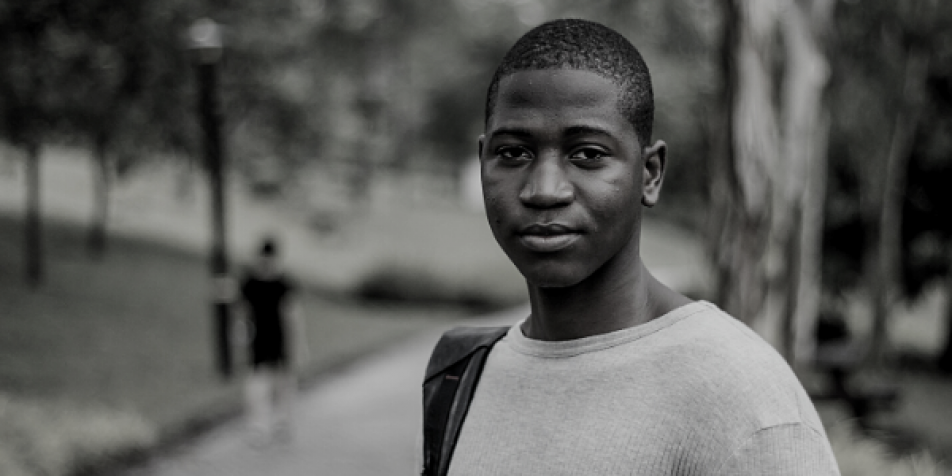As We Celebrate the End of 2020, Let’s Reflect Upon What We Learned

Before we kick the door closed on 2020, there were lessons learned and wisdom shared to carry into the new year as resolutions for 2021. In November and December, Juvenile Law Center hosted a series of five 45-minute conversations in commemoration of our 45th Anniversary. Re-listen to those amazing discussions led by Juvenile Law Center attorneys in conversation with expert partners https://jlc.org/events/celebrate-45-years-45-minutes. Each conversation provided insights for resolutions for the new year.
First, there is a big difference between heightened awareness, political will and political action leading to meaningful change. COVID 19 laid bare structural disparities. Courts, governors and legislatures hesitated and failed to commit to immediate action to protect youth in foster care, youth transitioning from care and youth incarcerated in the justice system. Concurrently, protests in the streets demanded a racial reckoning in the face of the murders of so many Black people by police caught in graphic detail and played over and over on news and social media. Many talked about “a moment” and “a window of opportunity for real change.” While heightened awareness of structural racism in the child welfare and justice systems may be a starting point, it will take sustained advocacy by a broad coalition to begin to dismantle the racism that permeates every aspect of these systems. Juvenile Law Center has long been dedicated to this critical work and we bring our commitment into 2021 and beyond, recognizing that without foundational change, we will merely continue to work around the edges of reform.
Second, even amidst heightened awareness about the structural racism that pervades our justice and child welfare systems, youth in these systems are often ignored in the calls for change. COVID 19 and calls for race equity focused attention on our justice, education and health care systems, but neither the media nor policy makers or influencers called out the unique and specific needs of youth who are incarcerated or in foster care unless advocates from Juvenile Law Center and our partners forced the conversation. Going into the new year, we must continue to elevate and amplify the voices and needs of the youth and families affected by these systems to ensure they are not forgotten.
Third, we must mobilize a broader coalition of new partners whose networks and expertise can bring needed resources to youth in foster care, youth in the justice system and those transitioning from placement in those systems. We must ask youth directly what they need and attempt to respond without hoops and obstacles. We need to center youth voice at the table but be sure every individual or entity that could respond is also at the table, not just officials from the child welfare and justice systems.
Fourth, our advocacy efforts must be directed toward ensuring that every child feels love and support from their family and community. Resources must go to strengthening ties rather than creating barriers that weaken them.
Fifth, race must be central at every stage of our advocacy so that the experiences of system-involvement for people of color are acknowledged, respected and fully considered. We will continue to work with partners to bring the specific perspectives and experiences of Black and Brown youth before policy makers and judges. A legal system based upon the responses and needs of “the reasonable [white, wealthy, adult] man” is blind to the life experiences of “the reasonable Black male teenager” or female adolescent or transgender youth. Only by putting specific histories and cultures before decisionmakers will we have fair and just decisions.
Sixth, 2020 taught us that facts and truth matter, but that they are not always persuasive or even considered. Advocates must continue to bring adolescent developmental science before the courts and policy makers in partnership with experts and families to illuminate the great promise of adolescence. Broad collaboration and communication are required to turn our systems away from overly harsh responses that further traumatize teens instead of mustering societies’ resources to set them on a positive trajectory to adulthood.
Seventh, every time a child is placed in foster care or incarcerated, no matter the length of time, that experience can be life-altering. The disruption and trauma of system involvement has both immediate and long-term consequences that can lead to poor, long-term outcomes with respect to housing stability, employment, and physical and mental health. Reforming these systems for each child and family facing the risk of future negative outcomes is our immediate, urgent agenda.
Finally, as we attend to the collateral consequences of system involvement such as criminal records and advocate for second chances, we as a society must also commit to giving every child a “first chance.” Safe and supported families and communities with access to quality education, affordable housing, healthcare and food security are all critical for our children but require a broad commitment from every sector of society
Goodbye 2020. We will not miss you but we will remember you. We will carry forward these lessons learned as we recommit to immediate and long term systemic and structural transformation of our child welfare and justice systems for youth. Here’s to working together in 2021!
